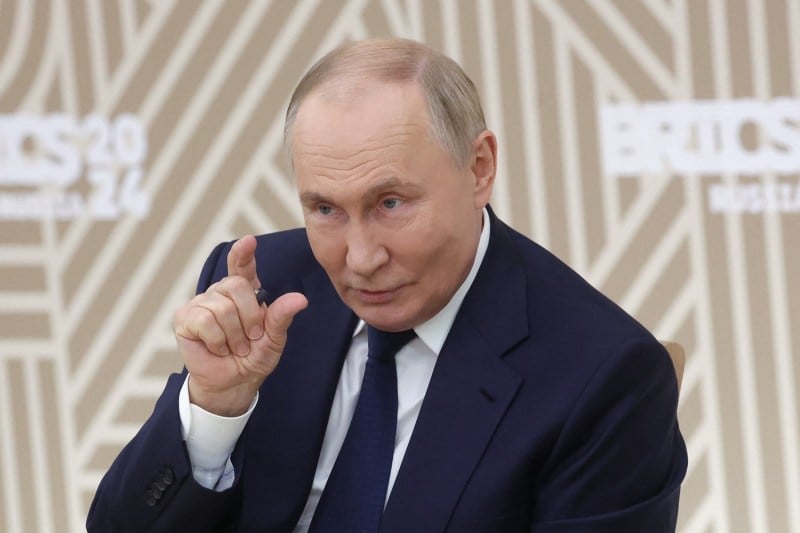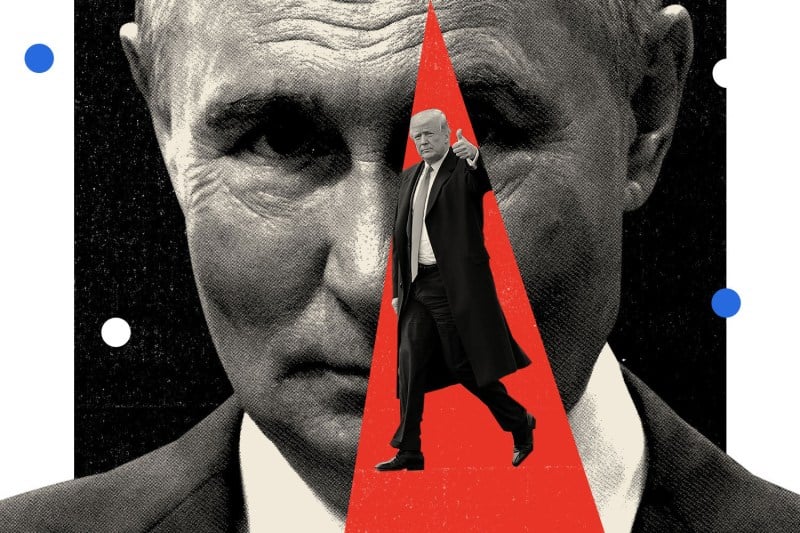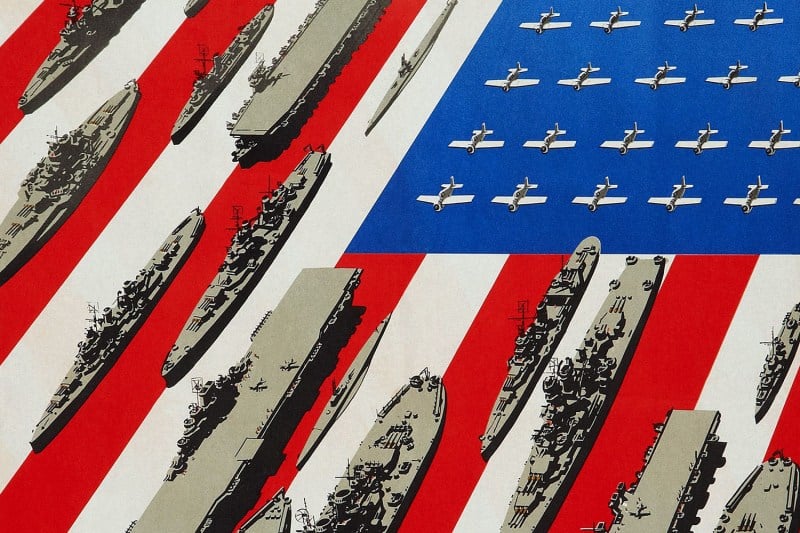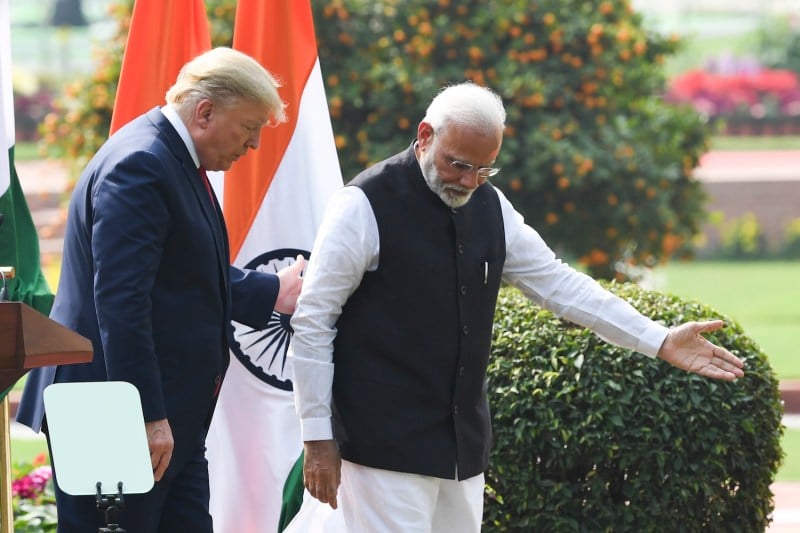In South Asia, Expect Continuity From Washington
Under Trump, the Indo-Pacific strategy is still likely to drive U.S. policy in the region.
Welcome to Foreign Policy’s South Asia Brief.
The highlights this week: U.S. South Asia policy will likely have considerable continuity in Donald Trump’s second term, Indian firms and individuals are caught up in U.S. sanctions for Russian business connections, and Canada accuses Indian Home Minister Amit Shah of orchestrating a campaign against Sikh activists on its soil.
Welcome to Foreign Policy’s South Asia Brief.
The highlights this week: U.S. South Asia policy will likely have considerable continuity in Donald Trump’s second term, Indian firms and individuals are caught up in U.S. sanctions for Russian business connections, and Canada accuses Indian Home Minister Amit Shah of orchestrating a campaign against Sikh activists on its soil.
What Is Trump’s South Asia Policy?
As the world reacts to Donald Trump’s victory in the U.S. presidential election, expectations are high for significant changes in U.S. foreign policy. After all, Trump has a starkly different worldview from President Joe Biden—and most other past U.S. leaders.
In South Asia, however, we can expect considerable continuity from Washington. The U.S. Indo-Pacific strategy—which counts on bipartisan support—has become the core driver of U.S. policy in Asia more broadly. Biden never announced a formal South Asia strategy, while Trump’s first-term strategy mainly targeted India, Pakistan, and Afghanistan.
The U.S. Indo-Pacific strategy first emerged under Trump as great-power competition intensified. The Biden administration robustly embraced the approach, albeit with some modifications. It has been on display in the last four years through U.S. efforts to strengthen ties with most South Asian capitals and to counter China’s deepening footprint in the region.
This diplomacy traces back to the latter period of the first Trump administration, which included Secretary of State Mike Pompeo in October 2020 traveling to the Maldives—a country long given short shrift by U.S. officials—to announce a plan to establish an embassy there.
Both Biden and Trump pitched investments—especially infrastructure and public goods—through bilateral means such as the U.S. International Development Finance Corp. and multilateral mechanisms such as the Quadrilateral Security Dialogue. They projected these options as more affordable and of better quality than China’s offerings.
Trump prioritizes great-power competition considerations in foreign policy. This suggests the Indo-Pacific strategy (or the goals that drive it) will remain intact. If so, Pakistan could be a big loser: Islamabad seeks deeper ties with Washington, but U.S. officials have been ambiguous about the country’s place in the Indo-Pacific strategy because of its close alliance with China.
However, Trump’s victory will certainly lead to some changes in the U.S. approach to South Asia, especially on a bilateral level. As I noted last week, current priorities and tension points in the U.S.-India relationship could shift, even as its trajectory remains positive. Trump may look to reframe the current focus of U.S. relations with Bangladesh, which emphasizes development and governance assistance.
Trump may also be more willing than Biden to engage with the Taliban regime in Afghanistan, despite its abhorrent human rights record. Trump’s hard-line positions on tariffs could affect trade with South Asia, which looks to the United States as a top export destination.
Finally, climate change—one of several global challenges that the Biden administration has sought to make a bigger part of its relations with South Asian states—could take on less importance in U.S. bilateral relations under Trump.
Trump will likely apply the same strategic lens to South Asia as a whole as the last two U.S. administrations. Of course, if he decides to be a maverick and pursue some type of new understanding with Chinese President Xi Jinping—an unlikely but not unfathomable prospect—all bets would be off. The geopolitical reverberations would be dramatic across South Asia and beyond.
But entrenched strategic imperatives will most likely deter any potential about-faces by the mercurial leader, and the Indo-Pacific strategy will become a fundamental feature of U.S. foreign policy for another four years.
What We’re Following
U.S. sanctions Indian firms, individuals. Last week, the U.S State and Treasury departments sanctioned nearly 400 entities, including 19 Indian companies and two Indian nationals, “for enabling Russia’s prosecution of its illegal war.” This is significant, given that Washington has refrained from taking punitive steps against New Delhi for continuing to do business with Moscow.
Russia is a close partner of India, which has continued importing Russian energy since the full-scale invasion of Ukraine in 2022. U.S. officials have said they can live with these energy imports because they have been purchased at rates below a G-7 price cap. U.S. strategic considerations—not wanting to antagonize a key partner—are clearly at play.
It’s a different story with the 19 private firms. According to the United States, these companies have provided technology and other materiel to bolster Russia’s war effort. Many of them say they won’t be that affected by the sanctions because they don’t do much business with the United States and are paid in Indian rupees.
This may have contributed to the U.S. decision to sanction them—making the penalties more symbolic than substantive.
Canada accuses Amit Shah of anti-Sikh campaign. India’s relations with Canada continue their free fall. Last week, Canadian Deputy Foreign Minister David Morrison alleged that Indian Home Minister Amit Shah orchestrated what Ottawa describes as an ongoing campaign of intimidation and violence against Sikh separatist activists in Canada.
Last month, the Washington Post reported that, according to Canadian officials, conversations and texts among Indian diplomats had revealed that Shah had authorized the campaign. Morrison said he was the source that confirmed the alleged Shah link to the Post. New Delhi has angrily denied the allegations.
While Canada accuses India of sponsoring campaigns on its soil, India has accused Canada of ignoring what it describes as an extremist threat posed by Sikh separatists. On Sunday, pro-Khalistan supporters—who advocate for an independent Sikh homeland in the Indian state of Punjab—demonstrated a demonstration outside a Hindu temple in Brampton, Canada, and attacked devotees, including Indian diplomats.
Canada responded swiftly. Senior politicians, including Prime Minister Justin Trudeau and Sikh leaders, condemned the attacks. Three people were arrested and charged. None of this will be enough to placate India; on Monday, Prime Minister Narendra Modi lambasted demonstrations as “appalling” and “cowardly” attempts to intimidate Indian diplomats.
Pakistan fails to sell off state airline. Pakistan held an auction on Oct. 31 intended to sell off the debt-ridden, state-owned Pakistan International Airlines (PIA). Privatizing struggling public companies is one of the core reforms that Islamabad is expected to pursue under its assistance program with the International Monetary Fund (IMF).
But the auction went poorly, because there was only one bidder: a real estate developer called Blue World City. Its $36 million bid fell far short of the $306 million minimum reserve price. Other prospective bidders said they were scared away by a variety of factors, from PIA’s poor reputation to unfavorable tax policies.
Pakistan is now in a tough spot: The IMF expects it to follow through on the sale. But with Blue World City refusing to up its bid and Pakistani Privatization Minister Abdul Aleem Khan insisting that the airline won’t be sold on the cheap, the process now appears stuck.
Under the Radar
Last Wednesday, Maryam Nawaz, the chief minister of Pakistan’s Punjab province, made a pitch for “climate diplomacy” with India to address the serious smog issues that afflict her province and the Indian state of Punjab across the border. She issued a similar call for subnational efforts on Oct. 9.
In the last two weeks, both Lahore, Pakistan, and New Delhi have ranked as two of the most polluted cities in the world, according to IQAir. Nawaz, who offered her remarks while speaking at a Diwali event in Lahore last week, said she was considering writing a letter to her counterpart in Indian Punjab to take the proposal forward.
In extending this olive branch across the border, Nawaz—the niece of Pakistani Prime Minister Shehbaz Sharif—may have motivations beyond public health. The Sharif family heads the party that leads the current ruling coalition in Islamabad; the party has strong business constituencies in Punjab that favor opening up more trade with India.
Still, Nawaz’s ask is more ambitious than it may seem. Attempts by India and Pakistan to cooperate on joint responses to the COVID-19 pandemic were unsuccessful. After catastrophic floods in Pakistan in 2022 dealt major blows to food security, the two countries were also unable to agree on an arrangement that would have brought cheap food imports into Pakistan.
Nawaz may hope that a subnational effort has a stronger chance of success.
FP’s Most Read This Week
- What Trump’s Win Means for U.S. Foreign Policy by FP Staff
- Why She Lost by Michael Hirsh
- The Enduring Mystery of Trump’s Relationship With Russia by Michael Hirsh
Regional Voices
In the Print, former senior Indian official Meenakashi Lekhi slams Trudeau’s policies toward Sikh separatists, which are causing major tensions with New Delhi. “By turning a blind eye to the snakes in his own backyard, Trudeau is setting the stage for a disaster of epic proportions for his country, his people, and the world at large,” she writes.
Prothom Alo deputy editor AKM Zakaria warns of the risks of a counterrevolution in Bangladesh following Prime Minister Sheikh Hasina’s departure. “Any effort to overturn the 5 August student-people’s uprising or change is bound to be both conspiratorial and vengeful. And it will certainly go against the hopes and aspirations of the people,” he writes.
In the Nepali Times, writer Chandra Kishore describes the overlooked dangers of lead poisoning among children in Nepal’s border areas. “[D]espite the known risk, there have been no studies in the borderlands between India and Nepal about the lead content in the bloodstream of the population, especially of women and children,” he writes.
Michael Kugelman is the writer of Foreign Policy’s weekly South Asia Brief. He is the director of the South Asia Institute at the Wilson Center in Washington. X: @michaelkugelman
More from Foreign Policy

Russia Can’t Keep Spending Like This for Long
Moscow is depleting its rainy-day savings to plug its war-induced fiscal deficit while preserving social stability.

The Next AI Debate Is About Geopolitics
Data might be the “new oil,” but nations—not nature—will decide where to build data centers.

The Enduring Mystery of Trump’s Relationship With Russia
After years of government investigations, we still don’t know if the former president is actually in Putin’s pocket.

The Case for the Greater West
Washington should abandon liberal universalism and work with the empire it already has.
This post was originally published on here









Join the Conversation
Commenting on this and other recent articles is just one benefit of a Foreign Policy subscription.
Already a subscriber?
.
Subscribe
Subscribe
View Comments
Join the Conversation
Join the conversation on this and other recent Foreign Policy articles when you subscribe now.
Subscribe
Subscribe
Not your account?
View Comments
Join the Conversation
Please follow our comment guidelines, stay on topic, and be civil, courteous, and respectful of others’ beliefs.
Change your username |
Log out